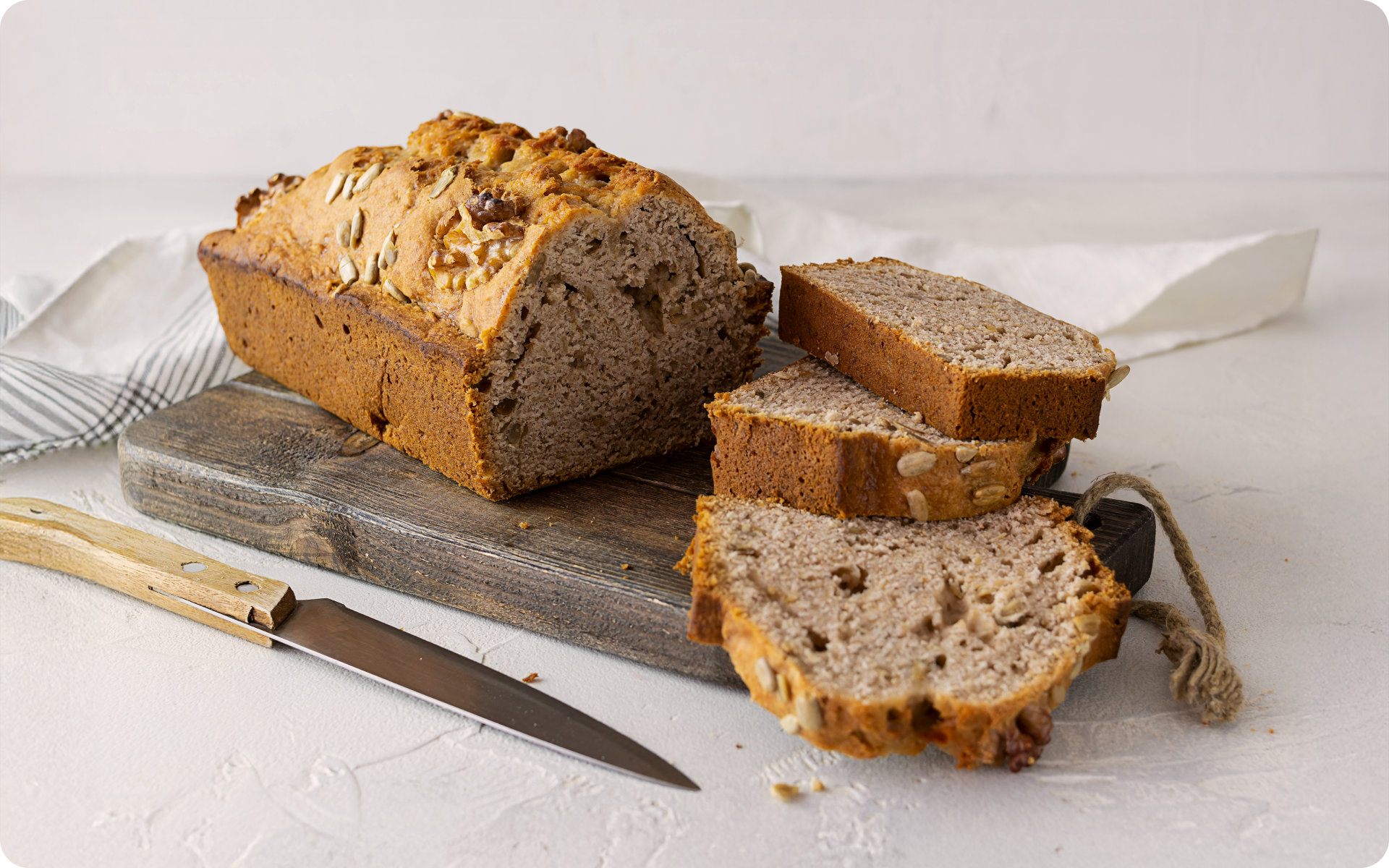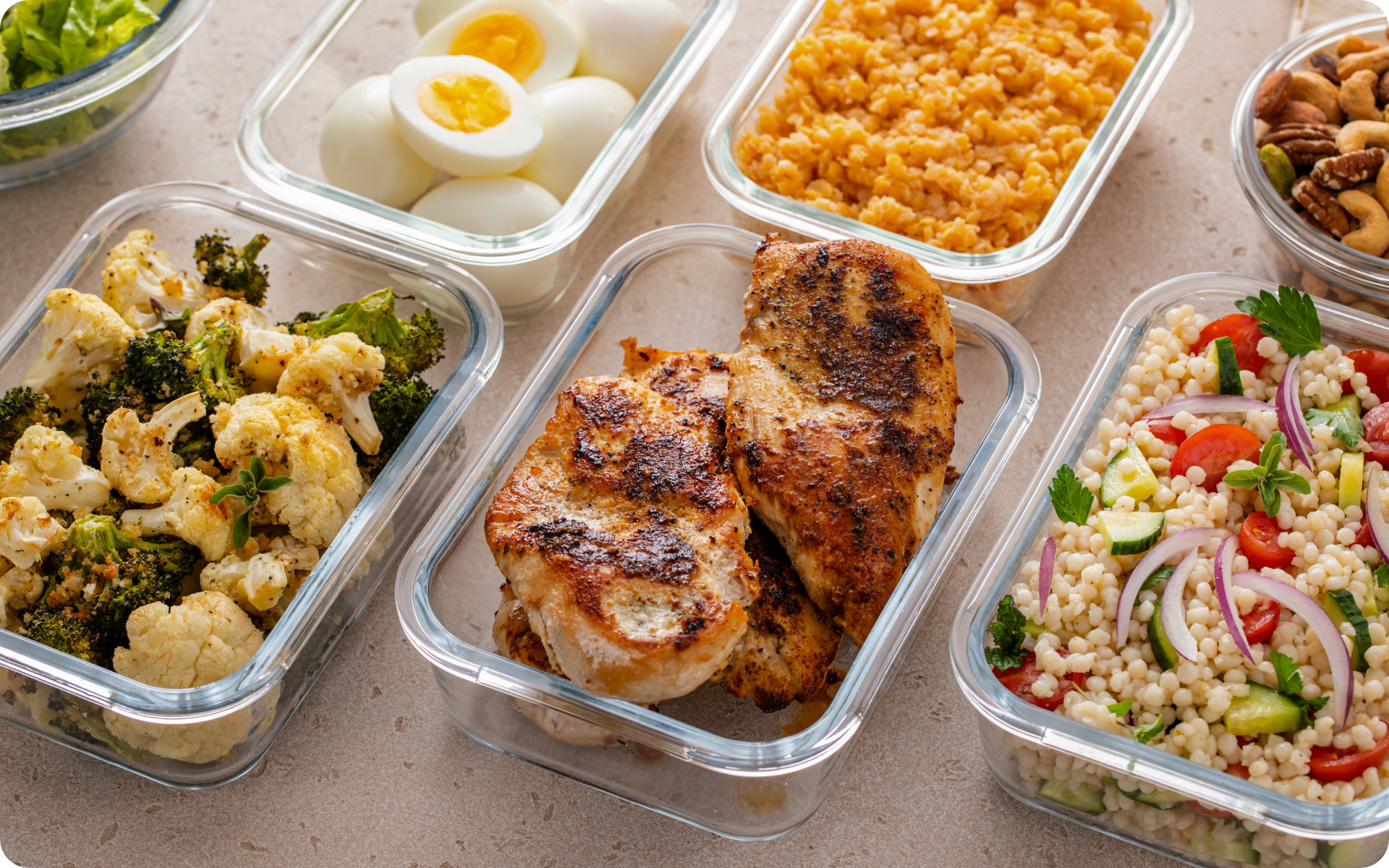Some think eating healthily is all about restrictions, especially when it comes to desserts. Yet, eating choices everywhere have been moving in the direction where eating healthily equals enjoying food.
This applies to individuals who have a sweet tooth. Overeating added sugar can be harmful and it may be hard to find the balance between enjoyment and overdoing it. That said, with these satisfying low sugar desserts, you shouldn’t feel guilty and you may even forget about this issue.
Nutritious, satiating, and delectable sweet treats can change your perception of what a healthy dessert tastes like.
Depriving yourself of desserts might cause even more cravings but by making the right choices and picking good recipes, you can benefit from the delicious taste and healthy ingredients.
What are the best low sugar desserts?
For many of us, the best low-sugar desserts to make include the fastest low-sugar desserts to make. There’s no doubt about it, since not everyone has a ton of time for homemade pies or a non-sugar Tiramisus. However, if we find something speedy-breezy we could feel capable of pulling off the sweet treat on our own.
We collected the top three desserts that take only a few steps but the results will leave you happy for a long time.
Dessert #1 Apple “Donuts”
Ingredients (1):
- 1 medium apple
- 2 teaspoons shredded unsweetened coconut
- 3 tablespoons almond butter
Directions:
- Remove the apple core.
- Slice the apple crosswise into 8 thin rings, each should be about 1/4 inch thick.
- Spread each apple slice with almond butter.
- Sprinkle with coconut, if desired.
Nutritional value per 2 rings (recipe makes 4 servings):
Calories: 103
Fats: 7g
Carbohydrates: 9 g (6 g total sugars)
Fiber: 3g
No-Sugar-Added Vegan Oatmeal Cookies
Ingredients (2):
- 1 cup quick-cooking oats
- 2 medium ripe mashed bananas
- ¾ teaspoon ground cinnamon
- ¾ cup almond flour
- ¼ teaspoon salt
- ¾ cup raisins or chopped dates
- ½ cup almond butter or natural peanut butter
- 1 teaspoon vanilla extract
Directions:
- Preheat oven to 350 degrees F.
- Line a large baking sheet with parchment paper.
- In a medium bowl, combine oats, salt, almond flour, and cinnamon. Mash bananas, almond butter, and vanilla in a large bowl until well combined.
- Toss the dry ingredients and dates into the banana mixture and stir with a wooden spoon.
- Create balls with the dough and place them on the prepared baking sheet, making 12 cookies per batch. Flatten cookies with a fork.
- Bake cookies for 15 minutes until firm to the touch and light brown on the bottom. Repeat with the remaining batter.
- Serve cool.
Nutritional value per 2 cookies (recipe makes 12 servings):
Calories: 177
Fats: 10g
Carbohydrates 20 g (9 g total sugars)
Fiber: 4g
Lemon-Blueberry Nice Cream
Ingredients (3)
- 3 medium ripe frozen bananas
- ¼ teaspoon vanilla extract
- ¼ cup cold water
- ¼ cup lemon juice
- ¾ cup frozen blueberries
Directions:
- Process frozen banana slices, vanilla, and lemon juice in a food processor until smooth, adding cold water to loosen the mixture.
- Transfer mixture to a bowl; stir in frozen blueberries.
- Serve immediately or store in an airtight container in the freezer for up to one month.
Nutritional value per 1/2 cup of ice cream (recipe makes 4 servings):
Calories: 98
Fats: 1g
Carbohydrates: 25 g (14 g total sugars)
Fiber: 3g
Protein: 1g
Whether you’re looking to simply pep up your fitness routine, jazz up your diet with mouth-watering low-calorie recipes or want to get your act together and significantly drop that number on your scale – BetterMe: Health Coaching app has got you covered! Improve your body and revamp your life!
What Are the Healthiest Sweets to Eat?
The healthiest sweets to eat may be already waiting for you in your garden, in your fridge, or at the nearest grocery store. There is a high chance you’ve already heard of them. Yet, personal preferences are always welcome if we talk about healthy food choices.
Our top healthiest sweets to eat involve:
Fruits
Most fruits are low in calories, sodium, and fat. They don’t have cholesterol and encompass essential nutrients our body needs, such as vitamin C, Potassium, fiber, and folate. Diets rich in potassium help maintain your blood pressure and may help lower the risks of heart disease.
Eating whole fruits is ideal for all the beneficial perks and fruit in any form can be included as part of a healthy diet (4).
Choose from many types of fruits, whether they’re apples, cherries, watermelon, pears, or bananas.
Dark Chocolate
You can’t underestimate the power of dark chocolate: it’s delicious, adjustable to different recipes, and healthy. Cocoa powder chocolate contains flavonoids – these substances act as antioxidants and have other benefits that may help lower the risk of some chronic diseases and improve mood and cognition (5).
Peanut Butter
Peanut Butter is a fantastic addition to loads of recipes, including low-sugar desserts for a dinner party. Making your homemade peanut butter or scooping it from a jar is simple and mixing it up with dark chocolate chips or fruits brings out a complimentary taste.
Besides, nuts in general are very nutritious, packing your body with healthy fats, fiber, and various minerals. They support your heart health and may reduce inflammation (6).
Dates
Plenty of natural sugar, fiber, vitamin B6, and a caramel-like taste make dates one of the award-winning sweet treats. Of course, people with diabetes should be mindful of the amount of dates they consume at one time because of their high sugar content. For example, one Medjool date is equivalent to 1 carbohydrate choice (7).
Sweet Potatoes
Veggies on the list? Didn’t see that coming? Well, you might want to try them as when properly cooked they will satiate your sweet cravings. In addition, sweet potatoes are a great source of vitamin A, potassium, fiber, vitamin C, and vitamin B6 (8). One thing to note: Boiling sweet potatoes preserves more beta-carotene and makes the nutrient more absorbable than frying or baking them.
How Can I Satisfy My Sweet Tooth without Sugar?
For starters, you might not be able to satisfy your sweet tooth without sugar as sugar is what you may be craving. However, if we try to satisfy your sweet needs with limited added sugar, there are great options for you to try.
At first, you might feel like it’s not enough for you and the cup of fruit is not as rewarding as a chocolate candy bar. Yet, over time, usually in a couple of weeks or less, you’ll likely realize that healthy sweet sources give you more pleasure than you could imagine.
The most common foods to please your luscious appetite include:
- Berries
- Dates
- Fruits
- Dark chocolate
- Greek Yogurt
- Sweet potatoes
- Smoothies
- Trail mix
- Nut butter
- Chia pudding
Read more: Low FODMAP Desserts You Need To Try
What Dessert Won’t Spike My Blood Sugar?
Desserts that won’t spike your blood sugar may include Medjool dates stuffed with peanut butter, chia seed pudding with toppings (like fruit, nuts, and yogurt), energy bites, desserts baked with protein powder, and nut butter-based desserts.
On top of that, you can add sweets made with sugar alternatives. Research has established that artificial sweeteners are less impactful to blood glucose than regular sugar (9).
Note the timing of when you’re eating your dessert. A 2019 study in Frontiers in Endocrinology suggests that eating foods containing protein and fat before carb-rich foods, like sugary products, can slow down digestion and the subsequent blood sugar increase, compared to eating that carb-heavy (or sugary) food alone (10).
Top 4 Low Sugar Desserts
Among other low sugar desserts to try, these four make the difference to your mundane eating routine. Like Mediterranean Diet Desserts they offer a pack of nutrients and naturally sweet ingredients.
The preparation time is longer, but it will be worth it once you take the first bite.
Key Lime Mason Jar Cheesecakes (11)
Ingredients:
- ⅔ cup crushed graham crackers
- 8 thin key lime slices
- 2 cups frozen light whipped dessert topping
- 2 ounce reduced-fat cream cheese
- 1 teaspoon key lime zest
- 2 tablespoons key lime juice
- 1 tablespoon melted butter
- ¼ teaspoon vanilla
- ¼ cup powdered sugar
Directions:
- Stir together crushed graham crackers and melted butter in a small bowl. Divide the mixture among eight 4-oz. canning jars; then press it gently with the back of a spoon.
- Prepare the filling by beating cream cheese with a mixer on medium for 30 seconds.
- Then beat in lime zest, vanilla, and juice. Add powdered sugar and beat until smooth.
- Add about 1/2 cup of the whipped topping.
- Transfer the mixture to a heavy resealable plastic bag; snip a 1-inch hole in one corner of the bag.
- Pipe filling into jars topping it with lime slices.
- Store in refrigerator for up to 24 hours.
Nutritional value per 1 jar (recipe makes 8):
Calories: 127
Fats: 6g
Carbs: 18g (8 g total sugars)
Protein: 1g
Want to spring-clean your diet, skyrocket your self-confidence, and shatter your insecurities? Check out the BetterMe: Health Coaching app and set this plan in motion!
Reduced-Sugar Chocolate Chip Cookies (12)
Ingredients:
- 2 eggs
- ½ cup butter
- 1 teaspoon baking soda
- 2 cup all-purpose flour
- ½ cup shortening
- ½ cup packed brown sugar
- 1 teaspoon salt
- 2 tablespoon honey (optional)*
- 1 tablespoon vanilla
- 1 cup dark chocolate pieces
Directions:
- Preheat oven to 375°F.
- Beat butter and shortening with a mixer on medium to high for 30 seconds in a large bowl.
- Add brown sugar, salt, and baking soda. Beat on medium for 2 minutes, scraping the bowl as needed. Beat in eggs, honey (if used), and vanilla. Then add flour and stir in chocolate pieces.
- Scoop dough by teaspoons 2 inches apart onto an ungreased cookie sheet.
- Bake for 6 to 8 minutes watching the edges turn light brown.
- Cool on a cookie sheet for 3 minutes.
- Remove; cool on a wire rack.
Nutritional value per 1 cookie (recipe makes 48):
Calories: 91
Fats: 6g
Carbs: 9g (5 g total sugars)
Protein: 1g
Pineapple, Mint, and Coconut Water Pops (13)
Ingredients:
- 2 cup fresh pineapple chunks
- 2 ½ cup unsweetened flavored or plain coconut water
- 2 teaspoons lime juice
- ⅓ cup packed fresh mint leaves
- 1 teaspoon honey or agave syrup
Directions:
- In a blender, mix coconut water, 1 1/2 cups of pineapple, mint, lime juice, and honey. Cover and blend until smooth.
- Press through a sieve into a bowl and let stand for 10 minutes; spoon off any foam.
- Pour the mixture into ice pop molds, filling each about two-thirds full.
- Thinly slice the remaining 1/2 cup pineapple and divide slices among molds.
- Cover and freeze overnight.
Nutritional value per 1 pop (recipe makes 8):
Calories: 91
Carbs: 11g (8 g total sugars)
Vitamin C: 24.6mg
“Fried” Ice Cream Truffles (14)
Ingredients:
- 4 tablespoons melted unsalted butter
- 1 cup unseasoned panko
- ¼ cup sugar
- 1 teaspoon ground cinnamon
- 1 14-16 ounce container premium caramel ice cream
- Cinnamon Whipped Cream
Directions:
- Stir together butter, sugar, and cinnamon in a medium bowl.
- In a small skillet toast panko over medium for about 5 minutes, stirring occasionally. Add it to the butter mixture. Stir to combine; cool completely.
- Stir to loosen the cooled crumb mixture.
- Scoop a 1-inch ball of ice cream and drop it into a crumb mixture. Roll to coat the ball completely and transfer it to a plate. Repeat with the remaining ice cream.
- Freeze truffles for 1 hour. Roll again in remaining crumbs, cover, and freeze for an additional 1 hour before serving. Truffles soften quickly so keep them frozen until eating them.
- Serve with picks and Cinnamon Whipped Cream.
Nutritional value per 1 piece (recipe makes 24):
Calories: 79
Fat: 5g
Carbs: 8g (7 g total sugars)
Protein: 1g
Read more: Mediterranean Diet Desserts: The Best Treats for Sweets Lovers
What Else Can I Eat Instead of Sugary Desserts?
Since we’ve covered both naturally low sugar desserts and those you cook yourself, you can start with them. In addition to this, you can consume other foods, like:
- fruits
- berries
- sweet corn
- sweet potato
- trail mix
- dates
- smoothies
- cottage cheese with honey
- baked apples
- chia pudding
- yogurt with nuts, fruits, and berries
- dark chocolate
- nut butter with apple slices
However, aside from low-sugar desserts, if you have diabetes or other blood sugar control issues, you may incorporate these effective hacks to reduce blood sugar spikes:
- Get physically active after having your dessert;
- Consume high-fiber foods;
- Put clothes on your carbs, meaning add protein, fiber, and fat to your carbs.
- Stay hydrated (15);
- Eat sweets for dessert after a balanced meal, and not as a snack on an empty stomach.
FAQs
What can you eat that has 0 sugar?
Foods that contain no sugar or very little sugar include meats, fats and oils, eggs, hard or aged cheese, seafood, non-starchy veggies (kale, celery, spinach, bell peppers, broccoli); whole grains, and legumes.
Are there any healthy desserts?
Yes, there are healthy and low sugar desserts to try to prepare at home or get in the grocery store. Feel free to use the recipes discussed in this article. Preparing desserts is usually better than buying them because you are in control of the ingredients, but it is possible to buy healthy desserts if you don’t have the time or ability to make them yourself.
What snacks have no sugar?
Snacks that contain no added sugars include spiced chickpeas, plain Greek Yogurt, nuts, popcorn, avocados, hard boiled eggs, guacamole, veggies, fruits, tortilla chips, berries, cheese, and garlic hummus.
How to satisfy a sweet tooth without sugar?
It’s essential to focus not on complete sugar abstinence but on choosing foods that are naturally sweet and nutritious, or those that contain low added sugar content. For instance, swapping milk or white chocolate with dark would be a great option for the beginning; prefer eating fruits, berries, and nuts instead of grocery-bought ultra processed sweets; make homemade smoothies and chia pudding. Besides, there are a bunch of easy low sugar desserts to satisfy your sugar cravings.
The Bottom Line
You’ve discovered the list of satisfying low sugar desserts, you won’t feel guilty for: some take more time for preparation, others are quicker. Aside from this, you can enjoy other foods that contain no added sugars. Great options for you may include dark chocolate, fruits, berries, sweet potatoes, dates, Greek Yogurt, and chia pudding.
Remember to eat your dessert after a balanced meal instead of having a sweet snack on an empty stomach if you want to limit the impact on your blood sugar.
DISCLAIMER:
This article is intended for general informational purposes only and does not serve to address individual circumstances. It is not a substitute for professional advice or help and should not be relied on for making any kind of decision-making. Any action taken as a direct or indirect result of the information in this article is entirely at your own risk and is your sole responsibility.
BetterMe, its content staff, and its medical advisors accept no responsibility for inaccuracies, errors, misstatements, inconsistencies, or omissions and specifically disclaim any liability, loss or risk, personal, professional or otherwise, which may be incurred as a consequence, directly or indirectly, of the use and/or application of any content.
You should always seek the advice of your physician or other qualified health provider with any questions you may have regarding a medical condition or your specific situation. Never disregard professional medical advice or delay seeking it because of BetterMe content. If you suspect or think you may have a medical emergency, call your doctor.
SOURCES:
- Apple “Donuts” (2024, eatingwell.com)
- No-Sugar-Added Vegan Oatmeal Cookies (2024, eatingwell.com)
- Lemon-Blueberry Nice Cream (2024, eatingwell.com)
- Fruits (stg.platform.usda.gov)
- Dark chocolate is best choice for health—but don’t turn it into medicine (2024, hsph.harvard.edu)
- Nuts and your heart: Eating nuts for heart health (2023, mayoclinic.org)
- The Many Health Benefits of Dates (2018, foodandnutrition.org)
- Sweet Potatoes (harvard.edu)
- Effect of Artificial Sweeteners on the Blood Glucose Concentration (2018, jmaacms.com)
- Impact of Nutrient Type and Sequence on Glucose Tolerance: Physiological Insights and Therapeutic Implications (2019, ncbi.nlm.nih.gov)
- Key Lime Mason Jar Cheesecakes (2021, bhg.com)
- Reduced-Sugar Chocolate Chip Cookies (2017, bhg.com)
- Pineapple, Mint, and Coconut Water Pops (2016, bhg.com)
- “Fried” Ice Cream Truffles (2022, bhg.com)
- 7 Ways to Reduce Blood Sugar Spikes After Meals (2024, diatribe.org)













